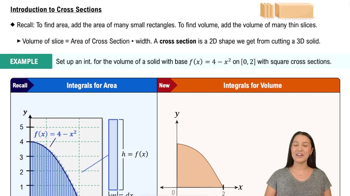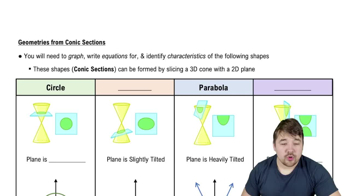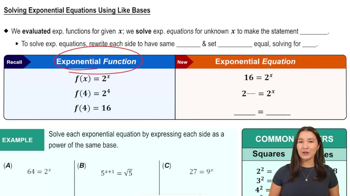9–20. Arc length calculations Find the arc length of the following curves on the given interval.
x = 2e^√2y + 1/16e^−√2y, for 0 ≤ y ≤ ln²/√2
 Verified step by step guidance
Verified step by step guidance Verified video answer for a similar problem:
Verified video answer for a similar problem:



 5:38m
5:38mMaster Introduction to Cross Sections with a bite sized video explanation from Patrick
Start learning